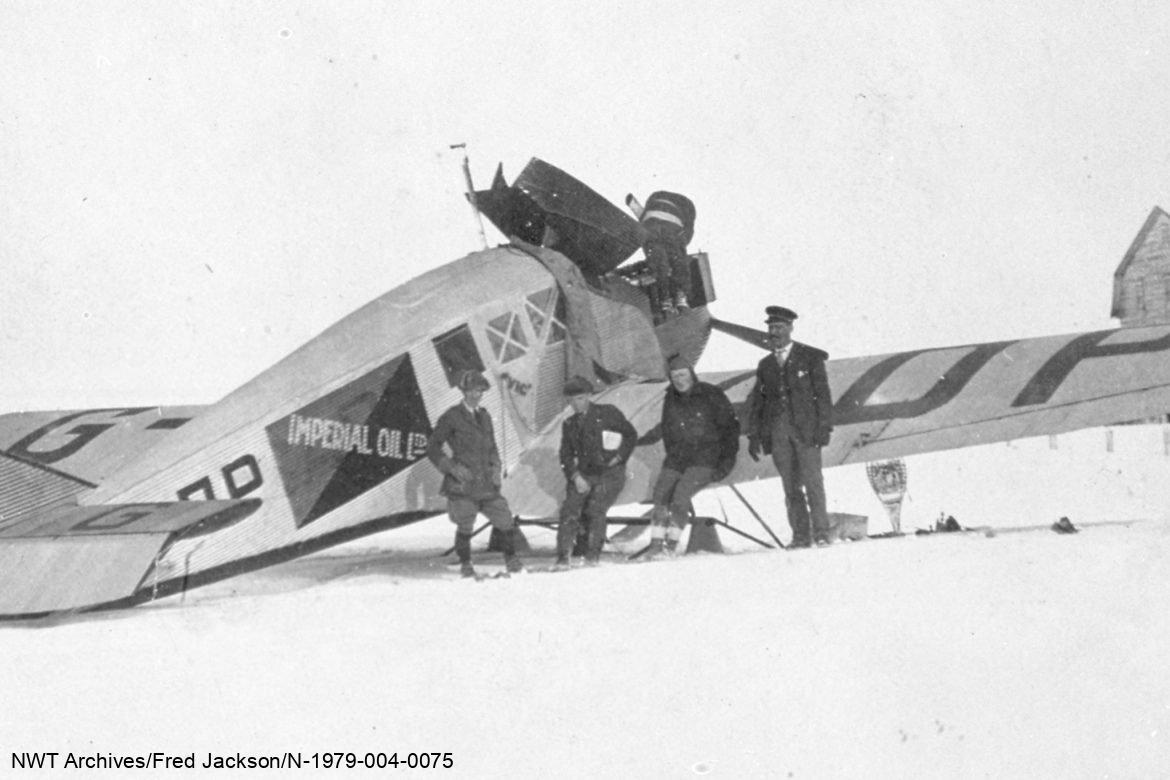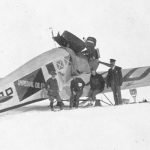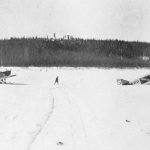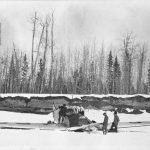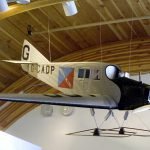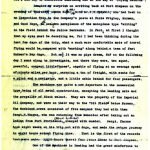1921
Aviation Comes North
The discovery of oil in Norman Wells caused hundreds of men to plan to head north in the spring of 1921 to stake claims around the Imperial Oil well. Imperial Oil’s response was to purchase two brand-new airplanes; Junkers named Rene (G-CADQ) and Vic (G-CADP). These airplanes would carry airplane mechanics and a surveyor to secure the oil holdings at Norman Wells. In the spring of 1921, they flew from Edmonton to Peace River, then to Fort Vermilion, Hay River and Fort Providence. It was when they tried to land at Fort Simpson that disaster struck.
The Rene, landing in the soft snow of a field near the Fort Simpson trading post, tipped onto its nose breaking its wooden propeller and one of its skis. Vic landed without difficulty even though it had developed a severe knock in its engine. Mechanics for the Rene and Vic – these early planes always flew with a mechanic on board – quickly removed the propeller and the ski from the Vic and put them on the Rene so that it could continue on its way down the Mackenzie valley.
When the Rene tried to take off, the engine stalled, and the airplane nosed into the ground and broke the last remaining propeller. The planes would be stuck in Fort Simpson until parts arrived on the first paddle-wheeler in July. The pilots turned to the Hudson’s Bay Company for help out of desperation.
The two trading post carpenters, Bill Hill and Walter Johnson built a replica of the old propeller using oak toboggan boards and glue made by boiling moose hides and hooves. This moose-glue propeller performed flawlessly; the Vic returned to Peace River and later made its way to Fort Norman, landing on June 2, 1921. Imperial Oil would eventually stake the entire Norman Wells oil field.
This first aviation venture into the North was a milestone in the history of the NWT. Airplanes opened the North, making travel and transport easier, faster and safer. In the early days, though, they were rare, expensive and, as shown by the Rene’s and Vic’s first flights north, risky to operate. It would not be until 1929 that airplanes came into regular use in the NWT with the advent of mail runs. Planes opened areas for mineral exploration and even trapping, effectively changing the fur industry. Twentieth-century mobility and technology had arrived in the North, changing the time from weeks and months of travel to hours and days and forever changing life in Denendeh and Nunakput.
